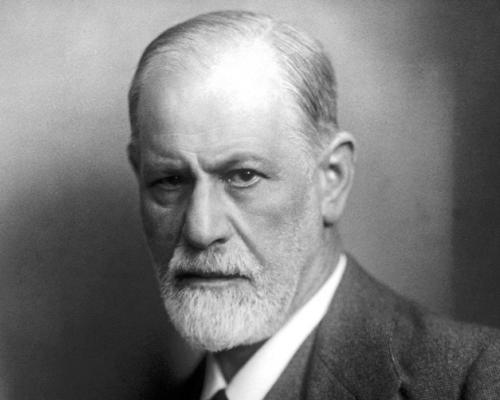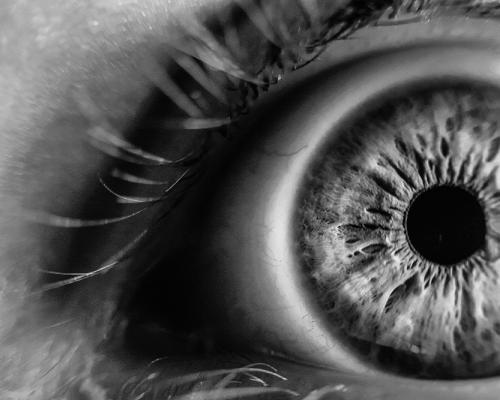A much-changed practice
GP Mona Mahfouz shows how dramatically the human givens approach has altered the way she works
She walked into my consulting room with dragging steps, shoulders hunched, face sunken and lined with pain. Helen is in her 70s, has been chronically depressed for years and has a variety of physical problems too. She had two sons and two daughters; tragically she lost both of her sons. The younger one died first, many long years ago, at the age of 21. He died in a diving accident while away working on an oil rig. The elder son died in more recent years, at the age of 45, from alcohol-related cirrhosis. It was a long, drawn-out, protracted illness, and he died in hospital.
Very often in general practice we come across what is known as atypical grief. Someone has lost a loved one many moons ago but has not come through the grieving process and their life won’t move on. They end up with chronic depression, antidepressants and referral to counselling that fails. When I first started treating Helen, I had no understanding of the whys and wherefores of this reaction.
If I had asked which son she grieved over more, I would have expected her to say the first, the younger one, whose death was sudden and who died away from home. I would have been wrong. She could cope with her younger son’s death, she told me, because he “died doing what he enjoyed doing”. However, she could never talk about her older son without crying and several times referred to the way he looked – “his face was black” – at the point of death, and how she could not get that image out of her head. She mentioned him at every consultation as the reason behind her depression. We tried all sorts of ways of walling her grief or containing it, and all to no avail.
It was only after I came across the human givens approach and started studying it in earnest that I began to wonder if, in fact, Helen was traumatised by her elder son’s actual death. She confirmed how traumatic a time it had been for her, going into detail about his last few hours.
I persuaded her to undergo the rewind technique (the simple non-invasive method routinely used in the human givens approach to neutralise emotionally arousing post-traumatic memories) and booked her into one of the special slots I keep for this, outside of normal surgery times. The effect was dramatic. She came to see me two weeks later for her follow-up appointment and laughingly told me how she had come by mistake the previous day, which, in fact, was the anniversary of her elder son’s death (she had had a strong sense of him telling her to start looking after herself, which had made her think of her doctor’s appointment); how she had felt a fool at the reception desk when told she had come on the wrong day and how, afterwards, she had gone with her husband to her son’s grave to lay flowers – all this told to me in a bright, cheerful voice! I have seen her a few times since for physical ailments. She has never again mentioned her son.

I believe that when someone remembers a lost, loved person, they look through the looking glass of time to past memories that make them laugh or smile, sometimes with a tinge of sadness. A traumatic point of death besmirches the looking glass, so that they can’t see through it; they can only see the tarnish on the surface. Removing the tarnish allows them to access memories of their loved ones with crystal-clear clarity and with peace. I am grateful to have the tools to do this now, and to effect such powerful change.
A changed practice
I have been a GP for just under 20 years and am one of three partners in a seven-doctor practice in Dudley, a deprived area 12 miles from Birmingham with high levels of unemployment, chronic ill health and mental illness. I have long been interested in mental illness (I am the mental health lead for the borough), was one of the first to recognise the high prevalence of depression and was a high prescriber of anti-depressants. I even helped write the first Dudley depression protocol/guidelines. These, for me, went out of date the instant I became aware of the human givens approach.
I first encountered the human givens in October 2005 and it has entirely changed my practice. Now my antidepressant prescribing has plummeted and my surgeries all run late, because counselling or information giving stretches a 10-minute appointment into a 20- or even 40-minute one.
I have also put the human givens on the Dudley map and, as mental health lead, have so sold the idea to local GPs that they are now trying to commission a primary care mental health team – comprising team members all trained in human givens – to serve a group of practices.

I am helping so many people in a more long-term or permanent way than previously. For instance, one of the hardest things for a GP is to open up the subject of psychological distress with a patient who has presented purely with physical symptoms. I hate the word ‘somatisation’ because, along with ‘psychosomatic’, it induces images for both patient and professional of imaginary ailments brought on by stress. However, it cannot be denied that very often we are faced with patients who are busy verbalising their physical symptoms whilst body language is screaming psychological distress.
The big question is, once you have excluded any serious pathology, how do you broach the subject of psychological problems without an offended patient retorting, “Are you saying that I am imagining these symptoms, doctor?” or demanding, in an angry tone, “What has my stress got to do with my backache?”
To sleep, to dream
I have always found talking about sleep a very good way to approach the subject, as patients rarely associate insomnia with stress, so are happy to answer questions. However, in the past, that only helped me clinch a diagnosis of depression, without necessarily being able to show the patient that this was the problem. That was until I became aware of Joe Griffin’s expectation fulfilment theory of dreaming, which posits that, in dream sleep at night, we discharge, in metaphorical form, the unexpressed emotional arousals of the day.1 (Depressed people, because they are constantly ruminating negatively and catastrophising, have an enormous amount of emotional arousal to discharge.) Now I have the perfect platform for making the link in the mind of a patient who has presented with a physical symptom, for instance low back pain. The consultation would go something like this.
GP: You’re not sleeping very well, are you?
Patient: Not at all, doctor. Haven’t slept well for quite a while now.
GP: Do you know why?
Patient: No, not really. I’ve never been a good sleeper but it’s worse lately.
GP (in a matter-of-fact tone): Well, that certainly explains your backache. (Patient looks puzzled.) Do you understand sleep patterns?
Patient: No, not really.
GP: Well, sleep is divided into dream sleep and deep sleep…
Then I go into a brief explanation of what dream sleep and deep sleep are for, dwelling in detail on the physically restorative effects of the latter. I then explain how too many unresolved issues lead to the need for excessive dream sleep and how, therefore, deep sleep gets sacrificed, along with its restorative, healing benefits. I finish by saying, “The answer, really, is not to go to bed with too many unresolved issues but to try and resolve these in the waking hours.” I then innocently ask, “Do you know what your unresolved issues might be?” And I’m in! Patients, having seen clearly that their very real physical symptoms are due to a real physical reason, are then able to overcome their initial reluctance and talk freely about their problems.
I think this is one of the most important outcomes that a GP can achieve in a standard 10-minute consultation.
No chronic pain
Like everyone else in the NHS I have been taught about pain along the Descartes principles that a physical problem will cause pain and, coversely, that pain signals a physical problem. I don’t need to elaborate on the problems this principle poses, from escalating doses of painkillers for uncontrollable pain to endless investigations looking for the elusive cause to the ignominious diagnosis, for quite a few people, of psychosomatic disorder. I was quite happy with my illusions, as I felt that I understood the mechanisms of pain quite well, and changing someone’s painkillers for a stronger type made for a fairly easy and short consultation. My illusions were shattered when I read an article on pain in the Human Givens journal.2 For the first time I was confronted with the proposition that pain is essentially a warning sign and, that being so, there is no place for chronic pain. Chronic pain means that the warning bells are still ringing, even after action has been taken. At first I was completely fazed by this, and disbelieving. But it made immediate sense of the ‘curiosity’, well known to GPs, that the pain so often disappears as soon as people make their appointment to see the doctor about it. And it was not too long before I got an opportunity to check it out.

A young Asian woman continually came to see me because of episodes of costochondritis, inflammation of the cartilage between the ribs, which can be caused by exertion such as hard coughing or moving furniture. She had had her symptoms for two years. The main symptom is stabbing chest pain. She seemed depressed, although she denied anything was the matter, and, because her English was poor, she was always accompanied by her clearly exasperated husband. I usually prescribed ibuprofen to bring down the inflammation but she claimed this did not work. This time I acted on my hunch and asked when had she first become depressed. Her husband told me that both her pain and depression started when her father died from a heart attack – after chest pains. Clearly, she was pattern matching to this event and feared that her own condition had a more sinister cause. I asked her what would reassure her that she did not have a heart condition and we settled on a heart trace and a chest X-ray and blood tests, all of which we organised from the surgery. The results, as expected, were normal. When she came back for her next appointment, she was no longer depressed, although she still had the costochondritis. But now, because the fear had gone, she could listen properly to my instructions to take the ibuprofen consistently for the time necessary for the inflammation to resolve. We haven’t seen her at the surgery since.
The nest of rats
In the case of every person with persistent pain, I now consider the possibility of hidden fear. Convincing the medical students that we teach of the legitimacy of this approach can be quite difficult, so I use metaphor to get the point across: “I would like you to imagine your body as if it were a 10-floor building, with 10 rooms on each floor. The building has a state-of-the-art alarm system, with an alarm in each room, and you are the security guard in charge of this building. One day, the alarm in room 512 goes off. What would you do? Undoubtedly, you would go up to check the room. After a cursory examination, you find that the catch on the window is broken and it keeps flapping in the wind, thereby setting off the sensor. You ring the carpenter who tells you it will be two days before he can repair it. You agree and go back to the foyer.
“However, the alarm keeps going off. It is very loud and is upsetting you and the other residents. What would you do? You would probably override the alarm and switch it off, given that you know what the problem is.
“That day you happen to go to lunch with a friend, who is a security guard in the neighbouring building. He goes on to tell you a horror story affecting his building, where the alarm kept going off in a room and initially they had thought this was due to a faulty catch but the alarm had continued to go off after this had been repaired. Eventually, they had discovered a nest of rats in the room, but not before the rats had destroyed all the wiring, carpeting and plastering in that room, and it had taken a lot of time and expense to repair everything.
“How would you feel when you returned to your building? How reassured are you at this stage and what would you like to do next? Most people would want to go up to check for rats but, on that day, you can’t do this yourself, as you have an appointment at the dentist, so you send up your deputy. You feel embarrassed to mention rats, so you don’t; you merely ask him to check room 512 again. When you get back from the dentist, he tells you that he has checked the room and that nothing has changed and the window is still broken. How reassured are you by this?
“Now let’s say that you had mentioned the rats and the horror story next door and that, when you came back, he told you that he had checked every nook and cranny, had looked under the carpets and that there were definitely no rats in 512. Would you feel better then?”
This is the perfect analogy for what happens in a patient’s mind when they experience a pain. Fifty per cent will tell you voluntarily what their nest of rats is and are easy to deal with. Unfortunately, the other 50 per cent are very difficult to deal with, as they will deny that they have any concerns; they are merely worried about their symptoms. However, pattern matching to feared outcomes means that it is impossible not to have a nest of rats. I am still working on how best to tackle this with patients and have found questions such as “What is your worst fear or nightmare that this can be?” helpful in not antagonising them.
Postnatal depression
Postnatal depression that has an onset soon after birth tends to be seen as particularly serious. Routine treatment is the usual barrage of antidepressants and, often, admission to a mother and baby unit – distressing for the mother and other members of the family. I now realise we are often missing the real source of the problem, with devastating long-term consequences for family relationships.
Angela is a 36-year-old lecturer whom I had known for several years, during which she had had various bouts of depression, which had always responded well to antidepressants. I learned from a colleague that she had a new baby and had been diagnosed with severe postnatal depression. She had been started on escalating doses of antidepressants and had been referred to the mother and baby unit. I felt sad that, even with a new baby, Angela had become depressed again.
Coincidentally, the very next day she bought the baby to see me. I noted that this was the third visit for this five-month-old baby in a 10-day period. I looked at a baby that was smiling and trying to play and then at a mum who looked very sad. Angela said, “She’s very ill and I’m really worried about her.” I briefly examined the healthy baby and then asked her to come back to see me on her own. She returned a few days later, broke down in tears and said she didn’t know why she was depressed. She had a happy family; this had been a planned pregnancy but bonding with the baby was very poor and she found it difficult to do anything for her, tending to leave her care to her teenage daughters and feeling very guilty as a result.
When we started to explore when this depression had begun, it became clear that it was from birth: not before and not after. Very quickly we established that she had had an extremely traumatic four days in hospital prior to the birth and during delivery, when she feared both she and the baby would die. It soon became crystal clear that we were dealing with post-traumatic stress disorder (PTSD), with nightmares, flashbacks and avoidance.
I performed the rewind with miraculous effect. She said, “I shall consider evermore that my daughter was born on the beaches of Italy” – this being the special relaxing place she chose to ‘go to’ during guided imaginary. She couldn’t wait to get home and hold her daughter for the first time since the baby was born. This was the first time I came across this phenomenon but it certainly wasn’t the last.
Blood clot
One young girl had come to our practice several times over a three-week period, seeing a different doctor each time about her headaches. They had all examined her and run tests and everything was normal. Finally, she saw one of the registrars (trainee GPs), who buzzed me and asked if she should refer the young woman for hospital investigation now. I told her to find out what the patient was afraid of. At the end of that day, I asked the registrar how things had progressed and she told me that the patient had persistently denied any worries. Then, at the very last moment, she had suddenly admitted that, 14 years previously, she had had a head injury and had sustained a blood clot on the brain. She was worried that this was a recurrence. Then the registrar was able to reassure her. Quite often doctors just assume what someone will be worried about, and quite often we will be totally wrong!
I have also discovered that a nest of rats is not just about the diagnosis but, often and equally importantly, about prognosis. In this case, I have found the question, “Where do you see yourself in a few years’ time?” very useful. The answers have been hugely illuminating and have enabled me to reassure patients about their future. When one middle-aged lady with arthritis of the knee came to see me asking for stronger painkillers, I knew that she knew the diagnosis, so prognosis had to be the issue. I asked her where she saw herself in a few years’ time and the answer was immediate: “In a wheelchair, of course!” When I told her that it was exceedingly unlikely that she would end up in a wheelchair and explained how arthritis progresses and what we could do about it, including a knee replacement, she was amazed. She left without the painkillers.

Alas, the carousel of investigations that we usually send our patients on, never really finding the answer, just increases patient anxieties by adding nests of rats. Nowadays, I have two pieces of advice for registrars dealing with pain. First, find the nest of rats and either exclude it or confirm it (the patient could be right in what is feared). Second, avoid at all costs adding more rats by sharing uncertainties with the patient – the current new fashion being taught to young doctors!
I find that human givens ideas have wormed their way into nearly all of my consultations, not just those to do with mental health. Explanation of how the brain works empowers most patients, especially those who are very distressed and tend to see themselves as mad or abnormal. Most people feel a lot better just for having a chat. I use the emotional needs audit as a tool; it is far more efficient in eliciting what is lacking in my patients’ lives and how I can help them, than the largely unrevealing health questionnaire that GPs are required to use.
Delving into addiction
The human givens approach has led me to make enormous changes in the way that I work with drug addicts. For 12 years, I have worked in the drug misuse services, as a GP with special interest in addiction. For the first 10, I practised in the traditional manner – dealing with the current symptoms of the drug misuse rather than finding out the root cause. It seemed to be assumed that addicts who had not managed to beat the habit either had no willpower or else enjoyed their life of addiction too much to consider change. But the vast majority of addicts I saw were very unhappy with their addiction.
When I became acquainted with the human givens approach, I realised that no addict wants to be addicted and that, therefore, they were in the grip of a powerful urge. Because of my interest in mental health, I first used the approach with clients who were highly psychologically disturbed and whose chaotic drug use could not be brought under control. In the course of history taking (the human givens way), it quickly emerged that they had all been deeply traumatised at some point in their lives and that their drug misuse had started at that time. The main effect of heroin (or drug of choice) was that “it made it all go away”. I then realised that there was a link between the emotions experienced at the time of first drug use and the ongoing craving, which was triggered by those same emotions.
The first time the penny dropped was when I was dealing with a girl who had a cocaine problem. We had been looking after her for a long time and, despite serious consequences, she would still end up going on cocaine binges that could last a few days. She seemed to have no idea what would trigger these binges off and had no control over stopping them. When I asked her if she remembered the first time she ever used cocaine, she replied that she remembered it very well. At the time, her husband had been working in London and he had promised that he was coming home to Dudley that night and that they would go out. She had organised a babysitter, had her hair done and was feeling very excited. Then her husband had rung to say that he had had a drink and wasn’t coming that night after all. Furious, she decided to go out anyway. She went to her brother, who had some cocaine and gave her some to calm her down. Of course, she felt better afterwards.
When we then looked at all her relapses, she realised that every binge had been preceded by anger (a row with her partner or with her mum). We did the rewind on the original event and another particularly significant one. Up till that point, she had been having binges every few weeks. After the rewind she became cocaine-free – as of now, for 12 months – even though she has at times been very angry with various family members.
Cravings – or ‘in your face’
I started to wonder if trauma was a universal link or only in those with mental ill health. So I asked every client, old and new, what was happening in their life when they first began taking the drug to which they were addicted. Without exception, all were going through a traumatic period in their lives, which could be related to physical, emotional and/or sexual abuse at home, bullying at school, parental alcoholism, marital breakdown and abusive relationships. They were all experiencing traumatic emotions, over-whelmingly anger, but fear and total lack of self-confidence also featured strongly.
For those unfortunate clients who lived constantly with these emotions, craving and use of illicit drugs continued, totally unaffected by whatever they were offered by drug services. This finally explained something that had baffled me for a very long time – why some people become addicted and others don’t. There are people who use heroin recreationally in very much the way that the average person uses alcohol, and there are people who are deeply addicted to drugs that have no physically addictive properties. (Heroin and alcohol are the two main substances with very strong physically addictive properties. Other drugs have strong psychologically addictive properties for the simple reason that they are all very good at making people feel better. For that reason, of course, any substance or activity that makes us feel better can be addictive.)
From these observations, I began to formulate the theory that, if at a time of deep psychological trauma, someone takes or does something which magics away powerful negative emotions, it is quite likely that they will become addicted to that substance or behaviour, should they experience that strong negative emotion again. It is almost as if a part of the brain, which I have nicknamed, in my explanations, the “misguided but well-meaning grandmother”, sees it as the one-and-only remedy for that bad emotion and no amount of reasoning is going to stop her from urging this course of action. (I find this has a parallel in pain where, if someone has found an effective painkiller for a particular pain, the next time they suffer it, they will want only that one painkiller.)
However, some clients admit to continued use, even though they no longer have any craving. They would not go out of their way to acquire their drug of choice, they say (previously, they would have gone to any length to obtain this), but they would not say no if it was in front of them. I call this ‘in your face’ use, and compare it to the situation where, having had dinner and feeling fully satiated, someone visits a friend who is tucking into a large plate of chips. Most people would pick at the chips, even though they were not hungry, knew it was bad for their diet, etc. ‘In your face’ use is easier to deal with than cravings, as those committed to becoming drug free can choose to avoid compromising situations (unless it is a partner who is using).

This was the case with a young man I helped recently. He had been with the drugs services for a few years and, although stable on a substitute drug, continued to have cravings and use heroin. When I asked what was going on when he first ever used, he eventually admitted that he had been very unhappy, as he had just found out that his father was sleeping with his then girlfriend. Heroin made those feelings go away (the expression used by almost everybody describing their first-ever use). We rewound that incident and he no longer has any craving but still uses heroin when his current partner brings it home (‘in your face’ phenomenon). This is upsetting him to the point where he is considering leaving her. She is not my patient, but I understand that she was once raped and her drug use is highly likely to be tied up with that trauma.
Affect bridge
I have also successfully used the affect bridge technique, in which a problematic emotion or be- haviour is traced back to an earlier event. One young woman had been addicted to heroin for nine years, since the age of 15. We explored trauma in her life and the major one was her father’s death when she was 13. He had been in hospital and, in the middle of the night, the hospital had rung to alert the family that he was very ill. Her mother had rushed there but she herself had failed to get up and go. Consequently, she had missed his death. The feelings of guilt and regret were the ones that heroin took away. I asked her to go back in time and imagine herself going to the hospital and having the conversation she wished she had had with her father. When she came to see me two weeks later, her words were, “I didn’t believe for one minute that this would make a difference, but I can’t believe how well I feel”. She had lost her feelings of guilt and she had lost her craving.
I have also started using the new technique, described by Joe Griffin,3 which extends the affect bridge to access previously hidden “molar memories”, manifesting themselves in the present as irrational, inappropriate emotional reactions. The effects have been equally rewarding, especially where anger is the overwhelming emotion.
Unravelling psychosis
I am often called to do an assessment under the Mental Health Act when someone is deemed to be in need of compulsory detention in a hospital. I always do a human givens assessment. For instance, on one occasion I was called to the hospital accident and emergency department to do an assessment on a young man. Legally, I was required merely to ascertain whether he was psychotic, thought-disordered, lacked insight and could be a danger to himself or others. He was all of those things. He kept saying that Tony Blair was coming to kill him and that he had cancer of the throat.
When questioned about his past life, it became clear that he had a poor relationship with his father, who he felt had coerced him into leaving school to take up a job that he hated and that he was still in. He also alluded to the misfortune of other workers in this job. It became clear that ‘Tony Blair’ was his metaphor for his father (a boss or leader) whom he saw as destroying him. As for the throat cancer, it emerged that he had once had a girlfriend who accused him of having bad breath, and it is probable that he felt comfortable with an explanation that induced sympathy rather than contempt. The social worker and psychiatrist were present. The social worker said, “It all became so clear when you asked those questions.” The young man did have to be compulsorily admitted but it was clear that he needed his life sorted out, and I believe that the psychiatrist, who would continue to have a role in his care, was totally enlightened.
On another occasion, I was called to a psychiatric hospital because a patient was refusing to stay and the staff were anxious that she might harm herself. It was a Saturday. “It is such a shame,” said one nurse, “because the home treatment team could take over Lilian’s case on Monday, if she stayed till then. But, if we have to section her, it will take ages before the papers can be discharged and she would have to stay in hospital until then.”
I said to the nurse, “Why don’t you offer Lilian the choice? To stay in voluntarily till Monday and then be discharged into the care of the home team. Or to be compulsorily detained.” She was stunned but she asked Lilian. And Lilian, who had been adamant before my arrival that she wouldn’t stop on the ward another minute, chose to remain voluntarily till Monday. For the first time in a long while, she had been offered an element of control over her own life and she had grabbed it, the element of choice making a previously unacceptable situation acceptable to her. Before I learned about the human givens, I would never have realised the power of even a small degree of autonomy and control.
The potion story
I often come across destructive relationships, particularly through my work with the drug services. These take their toll on the mental health of patients and often exacerbate drug use, if they are not also the actual cause.
Catherine had been with the drug service for some 18 months before her keyworker asked me to see her, in the hope that a human givens approach might help. It was very clear by then that Catherine’s relationship with her current partner was the cause and perpetuator of her drug addiction.
Prior to meeting her partner, Catherine had come from a loving and secure family, had good friends and held a stable and responsible job. Since then, she had lost her job (and didn’t want another, as her partner stole all the money to fund his habit). She had lost her friends (who didn’t like her partner). Her parents lived in constant anxiety for her. In the relationship she was abused both physically and mentally and freely admitted that there was no love. So why was she still in it? She started to cry and said, “I know I’m pathetic but I don’t know how to get out.”
I realised that the thing to help her might be a story and so I set about creating one for her. It was this:
Once upon a time there were a king and queen who ruled their people with love and kindness and wisdom. They were much loved by their people and their land was known as the Land of Sunshine. Their daughter, the princess of Sunshine, was beautiful and also much loved by the people.
News of her grace, kindness and beauty spread far and wide throughout the land until one day it reached the ears of the prince of the Land of Darkness. He wanted the princess for himself but he knew she would not come voluntarily, for things were very different in the Land of Darkness, and he knew he could not take her by force, for he was no match for the armies of the king of Sunshine. He asked his counsellors what he should do and they told him that the only one who could counsel him would be the Evil Witch of the East.
He rode that night to her castle. She told him that he would have to pay a high price and he agreed. She made him a potion and told him, “Give this to the princess regularly and she will remain under your spell”.
The very next day, he disguised himself and rode into the Land of Sunshine and to the palace. He bided his time until the princess was on her own and then he tricked her into drinking the potion. She fell immediately under his spell. He took her back to the Land of Darkness.
When the king of Sunshine found out, he grew very angry and sent his armies into the Land of Darkness to rescue his daughter. They duly returned with her but no sooner had she arrived than she got back on a horse and, seemingly of her own volition, rode back to the Land of Darkness. Again the king sent his armies to rescue his daughter, but again the same thing happened. The king realised that his daughter was under a spell. He asked his wise men what he could do to save his daughter from this evil magic and, as one, they told him that the only one who could help him was the White Witch of the West.
He immediately rode to her palace to seek her help. She smiled gently when he told her the story and said, “The power your daughter needs is inside of her. Bring her to me so that I can show her how to see it.”
The king sent his armies for the third time to fetch his daughter back. When they returned with her, he immediately took her on his horse and rode to the palace of the White Witch. When they arrived, the White Witch took the princess by the hand, smiled gently and said, “The power you need is within you, my child. Let me show you.” She led the princess to a large empty room. There were only two large mirrors, one on each side of the room. She left the princess alone and closed the door behind her.
The princess stared curiously around the room and walked to one of the mirrors. This was a very bright mirror. Light seemed to emanate from it. As she stared into it, she saw herself as she used to be when she was in the Land of Sunshine. She was laughing and happy and surrounded by friends. The princess stared wistfully at it and then moved to the other mirror. This one was very dark and seemed to suck light out of the room. Here she saw herself as she was now, in the Land of Darkness. Her face was thin and drawn and sad. She seemed so alone. As she looked, she suddenly saw something very strange. She peered closely and saw with amazement that there was a fine collar around her neck and she seemed to move as if pulled by a long leash. With horror, she put her hands to her neck and, sure enough, she could feel a collar around her neck. It had a simple buckle and she undid it with ease. The collar fell to the floor and she watched it in disgust as it writhed on the floor as if it had a life of its own.
She ran from the room into the arms of her father, who knew immediately that she had broken the spell. He carried her to his horse and rode back to the palace where there was great rejoicing at her safe return, and all lived happily ever after.
Meanwhile, back in the Land of Darkness, the prince smiled to himself, thinking that the princess had had enough time with her father, and started pulling hard on the leash. He kept pulling until he had the empty collar in his hand. He became very angry but didn’t know what to do, as he knew he was no match for the armies of the king of Sunshine. So he rode to the castle of the Evil Witch, but she just cackled with laughter when he demanded that she do something. She told him that, once the spell was broken, there was nothing he could do, and he would have to find a different princess. And so, angry and defeated, he rode away from her castle.
It was a few weeks before Catherine came back and I could tell her the story. Although I used guided imagery to relax her before I told her the story, afterwards she immediately asked whether I had written it especially for her. I felt disheartened, as I feared that her conscious mind had been too alert and not let her unconscious do its work. However, when she returned for review two weeks later, there was something tangibly different about her. She seemed brighter and taller and made references to the story. She was still with her partner but laughingly told us that her friend, having heard the story from her, had dumped her boyfriend that very evening!
A week later, her keyworker came and told me that Catherine had left her partner and the area, had gone to stay with friends in another town, had stopped taking her methadone and was looking to restart her life. That was now quite a few weeks ago and Catherine has not returned to her partner.
Welcome challenges
In one way, GPs are unique in terms of the people they see who are suffering from mental ill health. Psychiatrists, psychologists, mental health nurses and counsellors all see people who have either been diagnosed with a problem or have themselves sought help for it. I see people whom I perceive to have mental health issues but who may not wish to have help. It distresses me but I have had to learn, from experience, not to press unwanted help upon them. I can only make it clear that the offer is available, should they ever wish to take it up, and concentrate on what I can achieve elsewhere. My life was hectic before I ever encountered the human givens approach but is even more so now, as I relish every single challenge
Mona Mahfouz is a GP in Dudley, West Midlands
This article first appeared in "Human Givens Journal" Volume 14 - No. 4 (2007)
 We need your help – in order to maintain its editorial independence and bring you fascinating articles, interviews, reviews, research findings and life-changing information in every issue, the Human Givens Journal takes no advertising.
We need your help – in order to maintain its editorial independence and bring you fascinating articles, interviews, reviews, research findings and life-changing information in every issue, the Human Givens Journal takes no advertising.
To survive it needs new readers and subscribers – if you've enjoyed reading the articles, case histories and interviews on this website, and would like to support the human givens approach – please consider taking out a subscription or a back issue today.
References
- Griffin, J and Tyrrell, I (2004). Dreaming Reality: how dreaming keeps us sane or can drive us mad. HG Publishing, East Sussex.
- Thompson, K (2004). Handling how it hurts: hypnosis and pain control. Human Givens, 11, 4, 19–23.
- Griffin, J (2006). Molar memories: how an ancient survival mechanism can ruin lives. Human Givens, 13, 3, 9–18.
Latest Tweets:
Tweets by humangivensLatest News:
HG practitioner participates in global congress
HG practitioner Felicity Jaffrey, who lives and works in Egypt, received the extraordinary honour of being invited to speak at Egypt’s hugely prestigious Global Congress on Population, Health and Human Development (PHDC24) in Cairo in October.
SCoPEd - latest update
The six SCoPEd partners have published their latest update on the important work currently underway with regards to the SCoPEd framework implementation, governance and impact assessment.
Date posted: 14/02/2024















